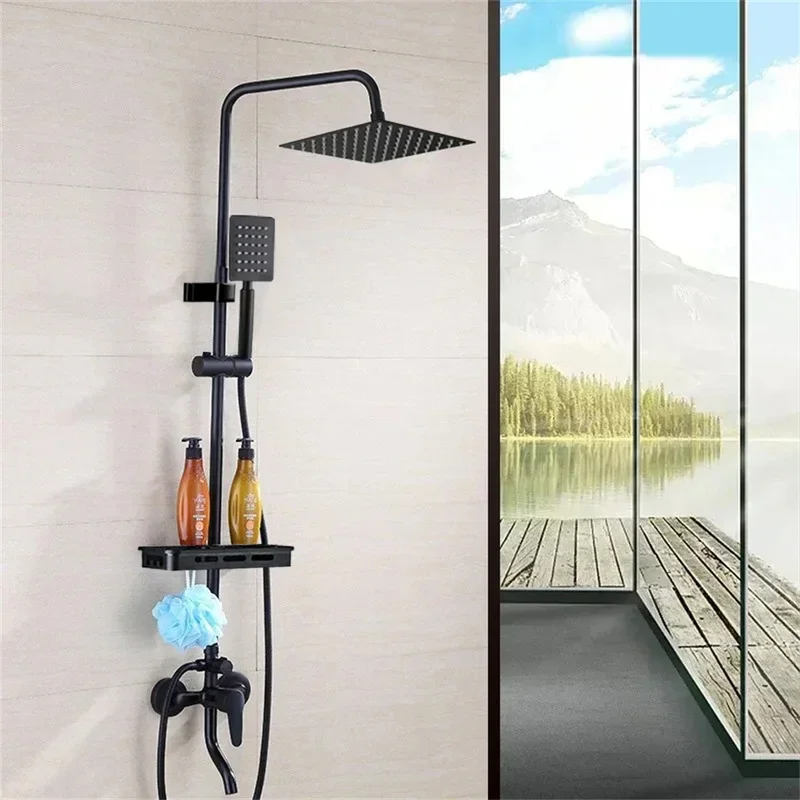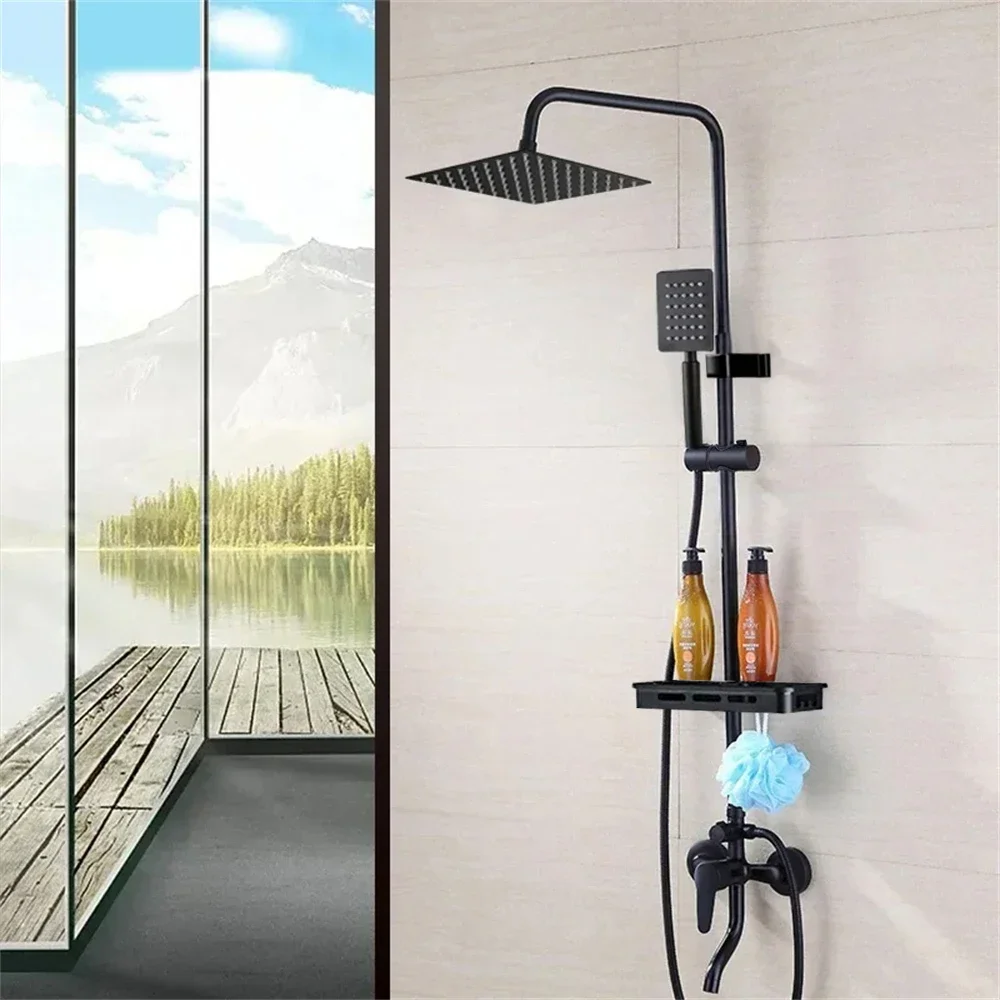Preparing Your Shower for Recaulking
Before diving into how to recaulk shower seams, proper preparation is crucial. Start with a thorough cleaning. Remove all shower products, and ensure a clear work area. Use a bathroom cleaner to eliminate soap scum and dirt. This helps reveal all the old caulk that needs removal.

Next, assess your shower’s condition. Look for signs of mold or mildew, especially near joints and edges. Treat these areas with a mold remover or a bleach-water solution. Be sure to wear gloves and ensure good ventilation while doing this.
Lastly, tape off the areas you plan to recaulk. Use painter’s tape to get straight edges. This step also prevents new caulk from sticking where it shouldn’t. Now, your shower is ready for the old caulk to be removed.
Essential Tools and Materials for Recaulking
To successfully recaulk your shower, gather the right tools and materials. Here’s a list to help you prepare:
- Caulk Gun: This tool helps apply the caulk evenly and with control.
- Silicone Caulk: Choose a waterproof, mold-resistant variety suited for bathroom use.
- Utility Knife: You’ll need this to remove the old caulk.
- Caulk Remover Tool: This aids in stripping away old caulk without damage.
- Painter’s Tape: Use this to mark off areas for a clean, straight caulk line.
- Rubbing Alcohol: It’s perfect for cleaning the surfaces before recaulking.
- Paper Towels or Clean Cloths: Keep these handy for wiping away excess caulk and cleaning.
- Protective Gloves: Wear them to keep your hands safe from harsh cleaners and caulk.
Gather these essentials before you start to ensure you know how to recaulk shower seams efficiently. This will make the process smoother and help achieve a professional look.
Removing Old Caulk from the Shower
After preparing your shower and gathering your tools, it’s time to remove the old caulk. This step is vital for a clean and effective recaulking job. Make sure to do this carefully to not damage the shower surfaces.
First, take the utility knife and gently score the caulk. This will help separate it from the tile or shower surface. Cut along both sides of the old caulk line carefully. Avoid cutting too deeply to prevent damage.
Next, use the caulk remover tool to pry up the caulk. Start at one end and work your way down. The old caulk should come off in long strips or chunks. Remove all the caulk, including any small pieces left behind.
Inspect the area for any remaining caulk, especially in crevices and corners. If you find stubborn spots, apply more pressure with the remover tool or use the utility knife again.
Once you’ve removed all the caulk, clean the area with rubbing alcohol. This will remove any remaining residue and ensure good adhesion for the new caulk. Wipe the surface dry with paper towels or a clean cloth after cleaning.
Ensuring that all old caulk is gone and that the surface is clean and dry is key. Now, you are ready to move on to the next step: cleaning and drying the area before applying new caulk.

Cleaning and Drying the Area Before Applying New Caulk
Once you have removed the old caulk, the next step is to clean and dry the area extensively. This ensures the new caulk will adhere properly and last longer. Here’s how to do it effectively:
- Wipe Down: Use rubbing alcohol and a clean cloth to wipe the surfaces. This kills any leftover mold spores and removes residues.
- Dry Thoroughly: Let the area air dry completely. If you’re in a hurry, use a hairdryer to speed up the process.
- Inspect for Moisture: Ensure no water is left, especially in cracks and crevices. Moisture can prevent the caulk from setting correctly.
- Double-Check Cleanliness: Look over the area again. Make sure there’s no dust, dirt, or soap scum lingering.
Proper cleaning and drying offers a clean slate for how to recaulk shower seams precisely. With a pristine surface, your new caulk can form a strong seal, warding off water and wear for years to come.
Choosing the Right Caulk for Your Shower
Selecting the right caulk is crucial for a lasting seal. When learning how to recaulk shower seams, understanding the options is key. Look for caulk that’s mold and mildew resistant. This is essential for damp bathroom environments. Also, it should be 100% silicone. This type ensures flexibility and adheres well to tiles and glass.
Here are steps to choose the best caulk for your shower:
- Check Compatibility: Ensure the caulk is suitable for your shower’s surfaces.
- Look for Waterproof Features: This prevents water from seeping in.
- Mold-Resistance is a Must: This helps keep the shower clean and healthy.
- Read Reviews: Other users’ experiences can guide your choice.
- Consider Cure Time: Some caulk sets faster than others. Pick one that aligns with your schedule.
Remember, a good caulk choice will affect the outcome. It makes the application easier and extends the lifespan of your caulk. Take the time to pick the right product for an effective how to recaulk shower project.
Applying the New Caulk Professionally
After choosing the right caulk and preparing the area, it’s time to apply the new caulk. Here’s how to do it like a pro:
- Cut the Caulk Tube: Snip the tip of the tube at a 45-degree angle. This allows for a smooth caulk line.
- Load the Caulk Gun: Place the tube in the caulk gun. Ensure it’s secure before you start.
- Start Caulking: Begin at one corner and apply steady pressure to the trigger. Keep the line even.
- Smooth the Caulk: Use a damp finger or caulk tool to smooth the bead out. This should be done quickly after application.
- Work in Sections: Don’t rush. Caulk small stretches at a time for better control.
As you apply the caulk, remember to hold the gun at a consistent angle. This helps in maintaining an even bead of caulk along the seam. Keep a pace that allows you to apply a continuous stream of caulk. But proceed slowly enough to ensure good adhesion to the shower surfaces. If you make a mistake, wipe it off promptly with a cloth before it dries.
During the process of learning how to recaulk shower seams, patience is essential. Take your time, and don’t rush the job. A neatly applied caulk line not only looks professional but also provides a durable seal. Remember, the goal is for the new caulk to keep water out and prevent future mildew and mold growth.

Finishing Touches: Smoothing and Sealing the Caulk
After you’ve applied the new caulk, the finishing touches can make all the difference. It’s time to smooth and seal your caulk to complete the how to recaulk shower process. Here’s what you need to do for a watertight finish:
- Smooth the Line: Quickly smooth the caulk after application. Use a damp fingertip or a caulk smoothing tool. This will press the caulk into the seam and remove excess.
- Keep a Steady Hand: Work in one continuous motion for the best results. If you pause, you might leave bumps or ridges in the caulk.
- Remove the Tape: Once the caulk is smooth, carefully pull off the painter’s tape. Do this while the caulk is still wet. It helps create a sharp, clean edge.
- Let It Cure: Give the caulk time to dry fully. Follow the manufacturer’s instructions for cure time. Usually, it’s 24 hours before the shower can be used again.
These steps are key in sealing the caulk correctly. A good seal means a longer-lasting barrier against water and mold. Practicing these techniques will ensure your how to recaulk shower job looks clean and professional. Next, we’ll cover tips for maintaining your shower caulk and preventing mildew.
Tips for Maintaining Your Shower Caulk and Preventing Mildew
Maintaining your shower caulk is key to preventing mildew. For a healthy, clean shower, here are my top tips:
- Regular Cleaning: Wipe down the caulk with a gentle cleaner once a week.
- Keep Dry: After showering, open a window or use an exhaust fan to remove moist air. Dry any water left on the caulk line with a towel.
- Inspect Regularly: Check the caulk for signs of wear or damage every month. Look for cracks, peeling, or mold growth.
- Act Quickly: If you spot mildew, clean it immediately with a mildew-specific cleaner. Be sure to read and follow the instructions carefully.
By regularly cleaning and keeping an eye on the caulk, you can prevent mildew from taking hold. If the caulk does start to show signs of wear, don’t wait to recaulk. Acting swiftly can keep your shower looking fresh and prevent more serious problems down the line. Remember, knowing how to recaulk shower seams is useful, but maintaining it can save time and effort.



